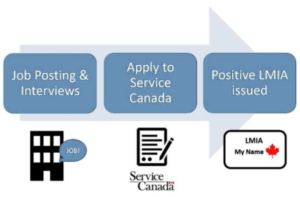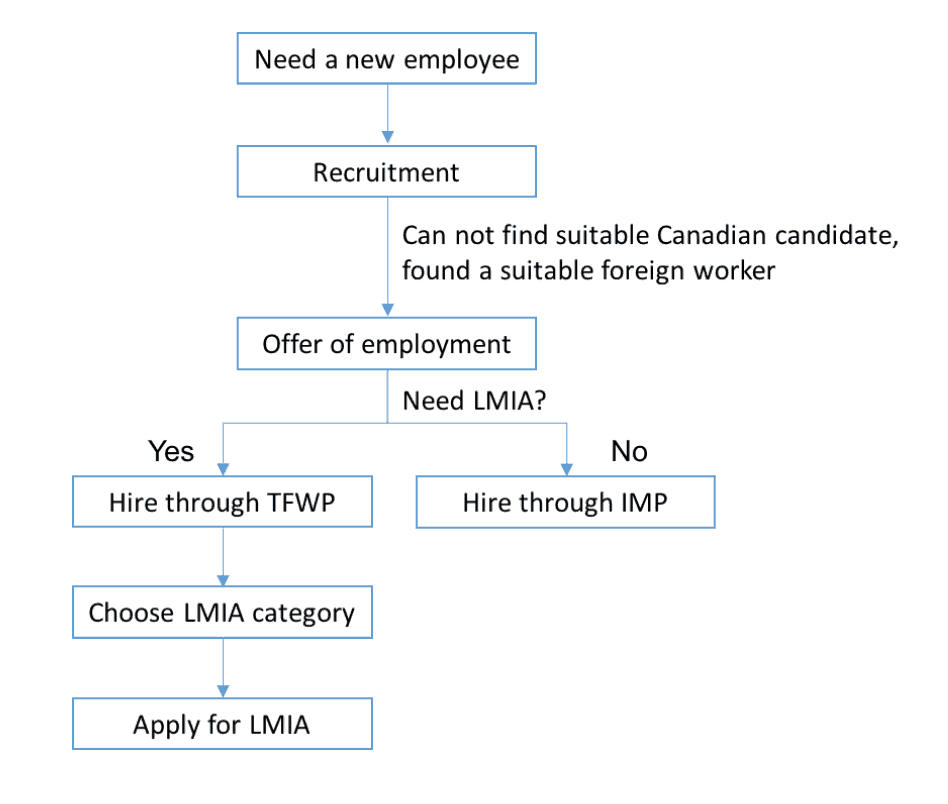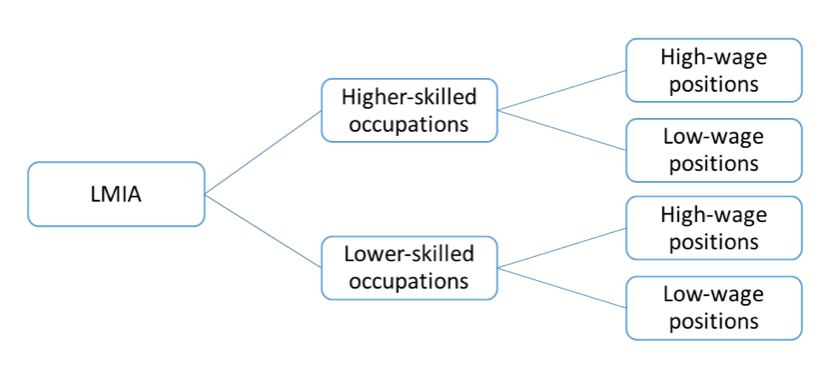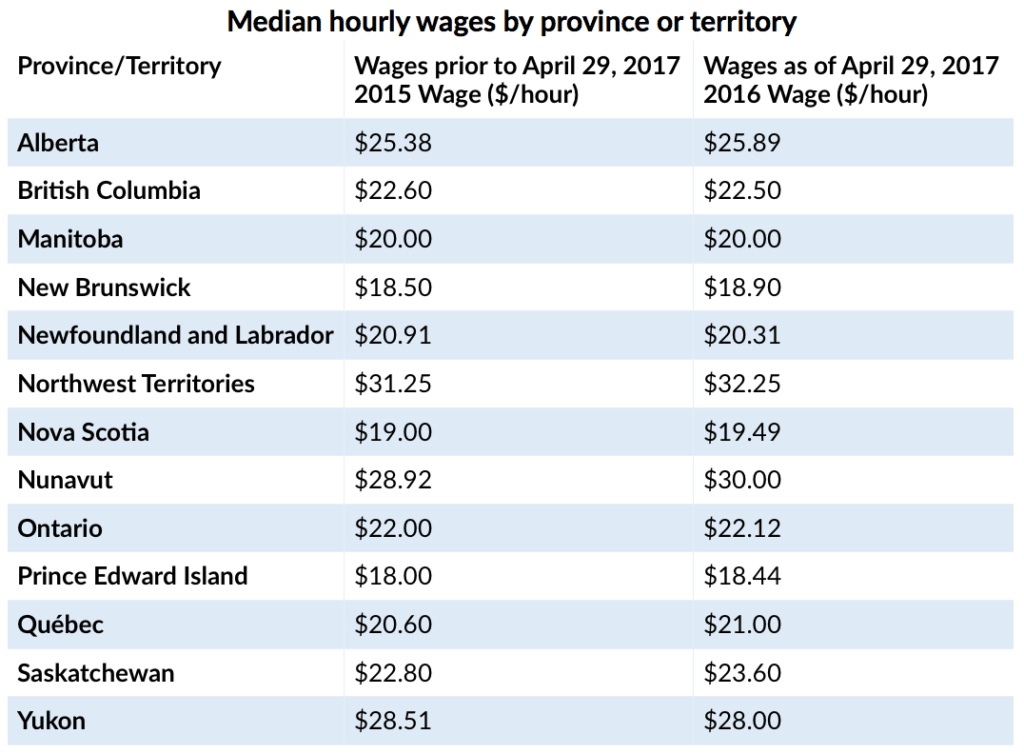Read our overview of Canada’s Temporary Foreign Workers Program, learn about the Labour Market Impact Assessment process and its alternatives, and find out what it takes to have your application approved.
We explain what Service Canada is really looking for. And in a separate blog post we share the top reasons for applications being rejected [LINK].
What is an LMIA?
A necessary evil!
In order to hire foreign workers, most employers are required to obtain a document called a Labour Market Impact Assessment (LMIA) from Employment and Social Development Canada (ESDC) before they can apply for a work permit.
The Purpose of an LMIA
The purpose of the assessment is to protect Canadian workers and allow them first access to jobs while balancing the needs of employers to access skills and expertise that they are unable to find in the Canadian labor market.
Put another way LMIA is an instrument to help alleviate genuine skills shortages in Canada while protecting Canadian and foreign workers from unfair treatment.
LMIAs can also be used as an instrument to support an application for permanent residency.
The program has multiple streams including high-skilled, low-skilled, and caregiver, primarily agricultural and film and entertainment.
LMIAs are a Bureaucratic Process
If only it were that easy!
As part of the process to assess whether a foreign worker is likely to have a neutral or positive effect on the labor market in Canada, ESDC conducts an in-depth assessment of the employer’s business needs, recruitment process, job offer, and more.
Service Canada, requires demonstrable evidence and supporting documentation that there is a genuine and acute skills shortage, which is negatively affecting your business.
Enforcement—With Teeth
Service Canada regularly audits employers to ensure compliance and has the powers of monetary penalties ranging from $500 to $100,000 per violation, lifetime bans from use of the program for serious violations, public naming an shaming, and the revocation of existing LMIA, hence the importance of compliance and monitoring.
Get Your LMIA Application Correct First Time
Service Canada’s stringent requirements and complicated process translate into a refusal rate as high as 36% and averaging 30%* across Canada in recent years, read more on this later.
(*Ref: Derived from Annual Labour Market Impact Assessment statistics 2007-2014)
Before investing the $1000 processing fee and costly advertising we recommend employers to have their needs assessed to find out whether the LMIA process is a good solution for your needs. This can save you time and money in the long run.
If you need help, have questions, or don’t want to tackle this yourself we can help you along your way. It is as easy as scheduling a consultation, calling us at 604-722-8930, or filling out the form below.
The remainder of this article is a guide for employers on how to hire foreign workers.
How do You Hire Foreign Workers?
The process of hiring a foreign worker is as follows.
Choosing the Right Program for Your Needs
The Immigration Refugees & Citizenship Canada (IRCC) offers two programs that allow employers to hire temporary foreign workers to fill temporary labor and skill shortages; they are the International Mobility Program (IMP) and the Temporary Foreign Worker Program (TFWP).
International Mobility Program (IMP)
Some employers are allowed to hire foreign workers without an LMIA. They are exempted from this requirement when hiring through the IMP. Please see the section Who needs an LMIA? for more details.
Temporary Foreign Worker Program (TFWP)
An LMIA is required for employers to hire foreign workers through the TFWP. A positive LMIA verifies that there is a need for foreign workers and that there is no Canadian worker available to do the job.
Who Needs an LMIA?
The first question that employers should ask themselves after finding a suitable foreign candidate is: Do I need an LMIA?
Not all employers need to apply for an LMIA. It is encouraged to consider whether exemptions apply first, as LMIA applications can be costly and complex.
The IRCC makes these exemptions when they believe there are significant benefits to Canada’s economy or when an agreement with other countries or provinces/territories exists.
Some of the Most Common LMIA Exemption Categories are:
- Agreements with other countries;
- Agreements with Provincial/Territorial;
- Provincial Nominees under some Provincial Nominee Programs
- Significant Benefits Intra-company transferees
To see the full list of LMIA-exempted occupations, check out the CIC website.
Which LMIA Category Should you Choose?
Once employers determined that they need an LMIA, they would need to determine which category of the LMIA they are applying through.
The LMIA has two categories, higher-skilled occupations, and lower-skilled occupations according to the National Occupational Classification (NOC).
- Higher-skilled occupations include NOC Skill Type 0, Skill Level A, and B occupations.
- Lower-skilled occupations include NOC Skill Level C and D occupations.
Each of these categories has two sub-categories, high-wage low-skill positions, and low-wage high-skill positions.
- High-wage positions are offered a salary at or above the provincial/territorial median hourly wage.
Employers hiring under this category must provide a Transition Plan. Planning to ensure future human resources needs without using the TFWP.
The Transition Plan should describe the activities the employers are agreeing to undertake to recruit, retain and train Canadians and permanent residents and to reduce their reliance on the TFWP. Anything that is included in the transition plan can be audited at a later date therefore it is important to follow through on the initiatives included in the plan.
- Low-wage positions are offered a salary below the provincial/territorial median hourly wage.
Employers hiring under this category are subject to a cap on the proportion of foreign workers employed at a specific work location.
10% cap if they have not hired any foreign workers in low-wage positions prior to June 20, 2014; 20% cap if they have hired foreign workers in low-wage positions prior to June 20, 2014.
Each province/territory has its own median hourly wages; please see the table below for details.
What do you need to apply for an LMIA?
LMIA Application
To apply for an LMIA, employers must convince and prove to ESDC that their business and offers of employment fulfill the following assessment factors.
Genuine Job Offer
ESDC determines whether the job offer is genuine by considering the following aspects:
1. The employer is actively engaged in the business
2. The offer is consistent with the reasonable employment needs of the employer
3. The employer is reasonably able to fulfill the terms of the job offer
4. The employer has fulfilled or has made reasonable efforts to fulfill any commitments made, in any previous assessments, namely the Employer Compliance Review
Comparable Wage and Working Conditions
The wages and working conditions of this job offer have to be comparable to those currently offered to employees working in the same occupation.
Benefits to the Canadian Workforce
Employers would need to show that:
1. The foreign worker is filling a labor shortage
2. The employment will directly create new job opportunities or help retain jobs for Canadians
3. The foreign worker will transfer their knowledge and skills to Canadians
Recruitment Efforts Made
Employers are required to show details of the recruitment process. They have to prove that reasonable efforts have been made to hire or train Canadians for the job prior to hiring a foreign worker.
In most cases, employers would have to state the details of the job advertisements and explain why the Canadian candidates were not suitable for the job.
No Labour Dispute
All employers have to show that the hiring of a foreign worker will not cause or affect a labor dispute.
LMIA Application Fee
An application fee of $1000 for each application is required. Unless the LMIA is in support of Canadian Permanent Residency and no work permit is required until the applicant becomes P.R.
Continual Compliance: Administrative Monetary Penalties and Bans
Upon approval of the LMIA, employers must continue to comply with the terms outlined in the application and the obligations outlined in the transition plan.
ESDC has the authority to review the activities of employers using the TFWP by conducting an inspection, an Employer Compliance Review (ECR), and/or a review under Ministerial Instructions.
A suspension of a LMIA may be imposed during any of the three reviews. When under a suspension, foreign workers would not be able to obtain a work permit from IRCC, until the suspension is lifted.
There can be two outcomes for the reviews, satisfactory or non-compliant. Each kind of review has its consequences for non-compliance. Please read the details about each review below.
|
Inspections |
ECR |
Ministerial Instructions |
|
|
Reasons for the review |
– there is reason to suspect non-compliance – previous non-compliance; or – random selection |
– part of the LMIA application assessment process |
– when ESDC receives new information regarding a possible non-compliance |
|
Factors reviewed |
– verify the conditions of employment offers are upheld |
– past compliance – workers are employed in the same occupation that was set out in the offer of employment; and – comparable wages |
|
|
Expectations of employers during the review |
– answer questions and provide requested documents or information; – attend the inspection; – provide assistance to the investigator; – retain all records related for six years; and – provide any requested documents |
– Give specific proof in the form of documents that they have complied with. – provide justifications for initial findings of non-compliance and, in specific cases, take corrective action |
Employers will be: – notified whether they are being reviewed for a potential revocation using Ministerial Instructions; – notified whenever an LMIA has been suspended or revoked; and – provided with an opportunity to provide information that relates to the allegation(s) that triggered the review. |
|
Possible consequences of non-compliance |
– warnings; – monetary penalties from $500 to $100,000 per violation; – a ban of 1, 2, 5 or 10 years, or permanent bans for the most serious violations; – name, address, period of ineligibility, and violation details published on the ESDC website; and/or – revocation of previously-issued LMIAs |
– refusal to process for two years from the TFWP and IMP; – negative LMIA for any pending applications; and/or – revocation of previously-issued LMIAs |
– revocation of previously-issued LMIAs |
For more details on each review, please visit this page.
Stringent Requirements = High Refusal Rate
The national LMIA refusal rate has been as high as 36% and averages 30% across Canada in recent years.
In 2015, the latest statistics available, things got a little better with Provincial rejection rates as high as 33.10% for Alberta, 22% for British Columbia, 18.56% for Ontario, and just over 19% for Saskatchewan and Manitoba.
(Ref: Annual Labour Market Impact Assessment statistics 2007-2014)
Incomplete Guidelines
It’s more than just the forms. Not everything you need is in the instructions.
Although Service Canada does publish their guidelines, these are not always complete or clear regarding exactly what they want to see.
For this reason, it is critical to ensure the application is complete, decision-ready, and meets requirements.
But this is difficult when:
Applications can be rejected based on internal statistics and labor market information that is not available to the public.
Discretionary Decision-Making
Service Canada officers have significant discretionary powers in decision-making and a high volume of applications to get through.
It can be easier for them to reject an application based on a technicality and get the case off their desk than it can be to request additional information or provide due process.
The worst thing is that when an application is rejected the application is shredded, meaning that if you want to submit a new application you need to start again. Our advice is to always have soft copies of all documents in the application.
The Employer Interview
All LMIA applications undergo a mandatory employer interview to cross-reference the details of the application and ask questions about why the position cannot be filled by a Canadian.
The employer must be familiar with the content of the application and be prepared to answer tough questions in the Service Canada interview.
Unless the employer is prepared and the application fully meets requirements there is a risk that the application may be rejected at worst or at best the LMIA issued for a shorter duration.
LMIAs Need to be Employer Driven
We often do consultations with people who are motivated to get an LMIA to boost their points for Express Entry. This is fine but any LMIA application needs to be employer-driven and for reasons that stem from a genuine labor shortage.
How Long is a Piece of String? — LMIA Processing Times
- Submitting a complete application, many applications are bounced for having a single document missing, this can cause significant delay leaving you without your worker and causing havoc with your recruitment drive;
- Certain high skilled high paid occupations qualify for the 10 days processing time, this is great if your job description qualifies;
- Requests for expedited processing can fall on deaf ears, although it is worth a try if the reasons are genuine;
- It is the squeaky wheel that gets oiled. Sometimes applications go beyond normal processing times, and when it does it is good to have someone on your side to chase Service Canada down and see what the delay is about.
Conclusions
Several factors make the LMIA process complex. There is a cost of $1000 per application, and there is an ongoing obligation to comply with the regulations.
Service Canada has significant enforcement powers that can result in large fines and bans from using the program as consequences for non-compliance.
The LMIA refusal rate is significant and it pays to have your case professionally assessed before investing time and money in the process.
It is important to get your application right the first time and ensure a complete and decision-ready application that meets and where possible exceeds EDC’s requirements.
It’s important for employers to have an LMIA strategy in place to meet their current and future needs.
If you are hiring, or planning to hire, foreign workers and wish to understand more of the details about the LMIA, please schedule a one-on-one consultation session with us.
We at CIP Consulting have experience preparing LMIA applications for employers and have completed many successful applications for them.
Don’t know where to start with the LMIA process? Get the advice and help you need.
Matthew Sell and Stephanie Chau wrote this article.










 Citizenship CRO
Citizenship CRO